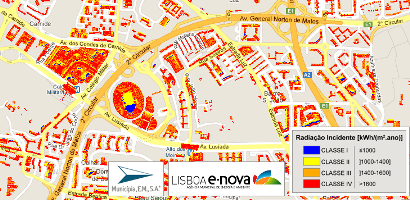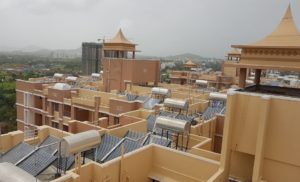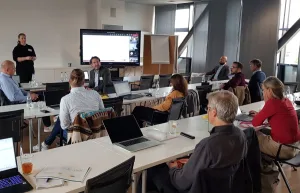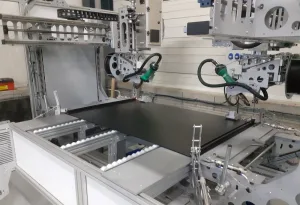

Portugal: 28% of Lisbon Buildings with Perfect Solar Thermal Energy Conditions
Thanks to a new online tool, Lisbon’s inhabitants are now able to determine the solar potential of their buildings’ rooftops. Lisbon’s so-called “Solar Potential Map” (Carta do Potencial Solar do Concelho de Lisboa) has been launched recently by the municipality’s energy agency, Lisboa E-Nova. The tool, which is free of charge, uses Google Maps to identify areas in which solar thermal systems can be installed. The calculation factors in the orientation and angle of the roof, shading, as well as other obstacles. All in all, 28% of Lisbon’s rooftops show an optimal orientation for the use of solar thermal energy.
Figure: Lisboa E-Nova
The rooftops in question receive more than 1,600 kWh/m² and year of solar radiation free from obstacles and shading, the coordinator of the initiative and engineer at Lisboa E-Nova, Joana Fernandes, confirms. “Even if only 4% of the best suited area was used, it would already fulfil the national obligation of 1 m² of collector area per inhabitant to cover 70% of domestic hot water demand,” explains Fernandes. The rooftops facing west also have a relevant potential. They receive 1,400 kWh/m² of solar radiation per year.
In addition, the tool can give users an estimate about the average productivity of the solar thermal and photovoltaic systems by taking into account the available solar radiation in each individual case. Calculating with the new tool, the engineers of Lisboa E-Nova were able to come up with an annual production of 590 GWh of solar electricity, or 17% of Lisbon’s electricity demand, from the photovoltaic modules installed on the remaining suitable roof area of 15%.
The tool was developed by Municipia Energy within the context of the European project POLIS – Identification and Mobilization of Solar Potentials via Local Strategies. The use of an Inertial Measurement System has allowed the design of a digital surface model, which also includes the height of the building. The software simulates the incident radiation throughout an entire year. It also factors in the surroundings, in order to identify shading, which could reduce the available solar area.
The tool Carta do Potencial Solar do Concelho de Lisboa can be accessed at: http://80.251.174.205/lisboae-nova/potencialsolar/


